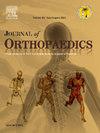Surgeon perspectives on a virtual reality platform for preoperative planning in complex bone sarcomas
IF 1.5
Q3 ORTHOPEDICS
引用次数: 0
Abstract
Background and objectives
Treatment of primary bone and soft tissue sarcomas typically includes complete surgical resection with or without adjunctive modalities. Despite best efforts, for the most challenging clinical scenarios such as axial or pelvic sarcoma, five-year survival rates are reported to be between 27 and 40 %. Since quality of resection is a key determinant of oncologic outcomes, it is critical to preoperatively plan the surgical approach to improve resection accuracy, ensure sufficient surgical margins, and reduce the risk of local or metastatic recurrence. The computer conversion of 2-dimensional (2D) computerized tomography (CT) and magnetic resonance imaging (MRI) to a three-dimensional (3D) virtual reality (VR) avatar image may allow improved preoperative estimation of tumor size, location, adjacent anatomy, and spatial understanding of the tumor without relying on surgeon experience, memory, and imagination. The purpose of this study is to investigate the utility of a virtual reality platform in preoperative planning and surgical approach in a retrospective cohort of pelvic bone sarcoma cases.
Methods
The histopathology database at our institution was queried for all historical cases of bone and soft tissue sarcoma with surgical resection failure, defined as positive gross or microscopic margins. Four cases of pelvic bone sarcoma were chosen for retrospective review by fellowship-trained orthopedic tumor specialists. For each case, participants first studied conventional 2D preoperative CT images and answered a questionnaire pertaining to objective case parameters. Participants then interacted with case-specific 3D models while wearing a VR headset and answered the same questionnaire. The VR ‘avatar’ was created with custom-developed software. After using both modalities, participants completed a Likert-scale survey aiming to evaluate the VR technology's subjective impact on understanding tumor environment, surgical plan confidence, and its ability to improve communication with colleagues and patients. Four attending orthopedic oncologists, one orthopedic oncology fellow, and one senior orthopedic oncology resident participated in the study.
Results
Four cases of failed resection were evaluated by a group of both attending surgeons and a group of trainees composed of both residents and fellows. Tumor borders were clearly delineated in 0 % and 66.6 % cases when evaluating with conventional 2D imaging and VR, respectively. Participants changed adjacent structure involvement grade 22.2 % of the time after assessing involvement grade on the VR technology, with adjacent ligamentous structure grading changed most frequently in 55.5 % of cases. Users reported they would change the surgical approach or margins 44.4 % of the time after reviewing with VR technology. Initial 6 plane resection plans were changed in every user case. Subjective responses indicated that surgeons expressed more confidence in their approach, confidence with obtaining negative margins, and provided more detail regarding structures to be resected in specific planes.
Conclusion
Pelvic tumors present unique surgical challenges due to complex 3D anatomy, the proximity of vital structures, consistency of the tumor, and the need to alter patient position during resection procedures. Using examples of failed pelvic bone sarcoma resections, our study found that VR imaging increased understanding of the tumor environment, characteristics, and ability to communicate with patients and colleagues.
外科医生对用于复杂骨肉瘤术前规划的虚拟现实平台的看法
背景和目的原发性骨和软组织肉瘤的治疗通常包括完整的手术切除,并采用或不采用辅助方法。尽管已经尽了最大努力,但对于最具挑战性的临床情况,如轴向或盆腔肉瘤,据报道五年生存率在 27% 到 40% 之间。由于切除质量是决定肿瘤治疗效果的关键因素,因此术前规划手术方法以提高切除准确性、确保足够的手术切缘并降低局部或转移性复发风险至关重要。将二维(2D)计算机断层扫描(CT)和核磁共振成像(MRI)转换为三维(3D)虚拟现实(VR)头像图像,可提高术前对肿瘤大小、位置、邻近解剖结构的估计以及对肿瘤空间的理解,而无需依赖外科医生的经验、记忆和想象力。本研究旨在研究虚拟现实平台在骨盆骨肉瘤病例回顾性队列中的术前计划和手术方法中的实用性。方法查询了本院组织病理学数据库中所有手术切除失败的骨和软组织肉瘤病例(定义为大体或显微边缘阳性)。经过研究培训的骨科肿瘤专家选择了四例骨盆骨肉瘤病例进行回顾性研究。对于每个病例,参与者首先研究常规的二维术前 CT 图像,并回答有关客观病例参数的问卷。然后,参与者戴上 VR 头显与特定病例的 3D 模型进行互动,并回答相同的问卷。VR "化身 "是通过定制开发的软件创建的。使用这两种模式后,参与者完成了一项李克特量表调查,旨在评估 VR 技术对了解肿瘤环境、手术计划信心的主观影响,以及其改善与同事和患者沟通的能力。四名肿瘤骨科主治医师、一名肿瘤骨科研究员和一名肿瘤骨科高级住院医师参与了这项研究。结果由主治医师和住院医师及研究员组成的受训人员小组对四例切除失败的病例进行了评估。在使用传统二维成像和 VR 评估时,分别有 0% 和 66.6% 的病例能清晰划分肿瘤边界。在使用 VR 技术评估受累等级后,22.2% 的参与者改变了邻近结构的受累等级,其中 55.5% 的病例最常改变邻近韧带结构的受累等级。用户表示,在使用 VR 技术进行复查后,他们有 44.4% 的时间会改变手术方法或切缘。每个用户的病例都改变了最初的 6 平面切除计划。主观反应表明,外科医生对他们的手术方法更有信心,对获得阴性边缘更有信心,并提供了更多关于在特定平面上切除的结构的细节。结论骨盆肿瘤由于复杂的三维解剖结构、临近重要结构、肿瘤的一致性以及在切除过程中需要改变患者体位等原因,给手术带来了独特的挑战。通过盆腔骨肉瘤切除失败的例子,我们的研究发现 VR 成像提高了对肿瘤环境、特征的了解,以及与患者和同事沟通的能力。
本文章由计算机程序翻译,如有差异,请以英文原文为准。
求助全文
约1分钟内获得全文
求助全文
来源期刊

Journal of orthopaedics
ORTHOPEDICS-
CiteScore
3.50
自引率
6.70%
发文量
202
审稿时长
56 days
期刊介绍:
Journal of Orthopaedics aims to be a leading journal in orthopaedics and contribute towards the improvement of quality of orthopedic health care. The journal publishes original research work and review articles related to different aspects of orthopaedics including Arthroplasty, Arthroscopy, Sports Medicine, Trauma, Spine and Spinal deformities, Pediatric orthopaedics, limb reconstruction procedures, hand surgery, and orthopaedic oncology. It also publishes articles on continuing education, health-related information, case reports and letters to the editor. It is requested to note that the journal has an international readership and all submissions should be aimed at specifying something about the setting in which the work was conducted. Authors must also provide any specific reasons for the research and also provide an elaborate description of the results.
 求助内容:
求助内容: 应助结果提醒方式:
应助结果提醒方式:


